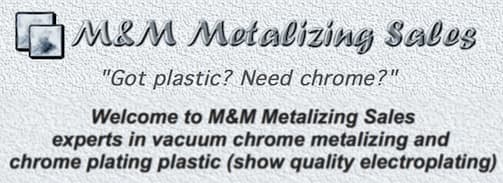
-----
Peel off problem in plating ABS plastic
finishing.com is made possible by ...

Q. Hi,
I run a plating on plastic line, plating ABS components. Since a while we are facing "Peel-Off" failures when we do the cross-hatch test.
Our Etching parameters are: Chromic Acid: 375 - 400 g/l
sulfuric Acid: 375- 400 g/l
Cr3+ : <50 g/l
Temp: 70 C
Time: 10 to 12 mins.
Is the trivalent too high?
We have checked the plastic surface for any oil / grease or moulding defects and they seem OK.
Kindly Suggest.
Thank You
Plating Shop owner - Delhi, India
September 13, 2010
A. Hello,
If the peel off is between the metal and plastic surface I suggest decrease or increase the etching time. I had this problem and I reduced time to 7 minutes. Also time can be increased up to 15 minutes. High Cr3 sometimes can cause this problem, but I think your parameter is right.
Also this problem can be caused by injection parameters, that results in stressed parts. Humidity in the plastic material before injection can cause this problem too.
I hope this information help you.
Regards.
Estácio.
- Joinville, SC, Brazil
September 22, 2010
Q. Hi,
Thanks for your reply. Like I said, I have checked the moulded parts ( done the stress test & check for moisture) & they seem to be fine. Also, I have tried plating times from 6, 8, 10, 12, 14, 16 mins. & there was failure observed in all of them (10 & 12 showing lesser peel-off than others)
Is it correct that after a couple of years(3 to be precise), the etching solution should be discarded even though we are keeping the tri-valent in limits?
Thanks
Plating Shop owner - New Delhi, India
September 24, 2010
A. Hello.
Replacing the etching solution is acceptable because of the mass of butadiene oxidized from the ABS and other contaminants in the solution decrease the etching performance.
Some industries discard about a half of the bath and replace with new solution. A suggestion is make a new solution in lab and etch some parts, them continue the process in your industrial line to evaluate the peel of problem, if the parts size permit.
Best regards.
Estacio.
- Joinville, SC, Brazil
September 26, 2010
![]() Thanks for your reply. I did make a Lab scale etching and found that the problem was solved. Then replaced my old etching with a new one. Things seem fine now. I guess the Buta-di-ene does create some fuss after a couple of years.
Thanks for your reply. I did make a Lab scale etching and found that the problem was solved. Then replaced my old etching with a new one. Things seem fine now. I guess the Buta-di-ene does create some fuss after a couple of years.
Thanks
Plating Shop owner - New Delhi, India
October 5, 2010
Q, A, or Comment on THIS thread -or- Start a NEW Thread